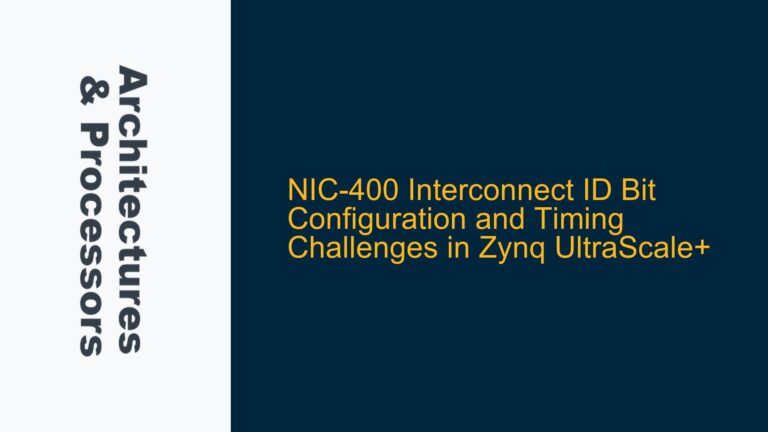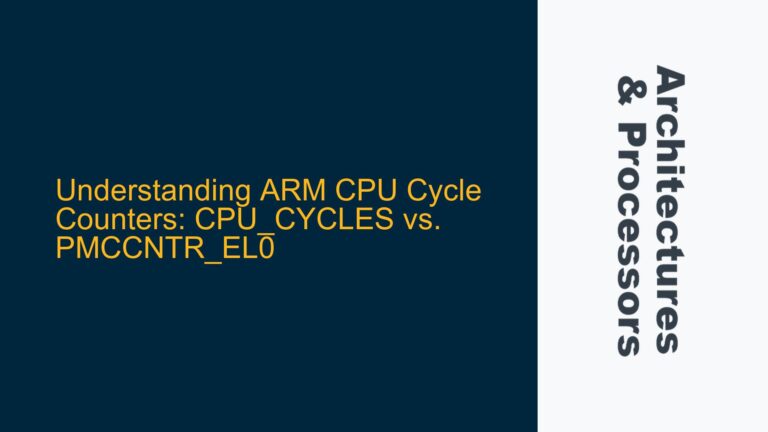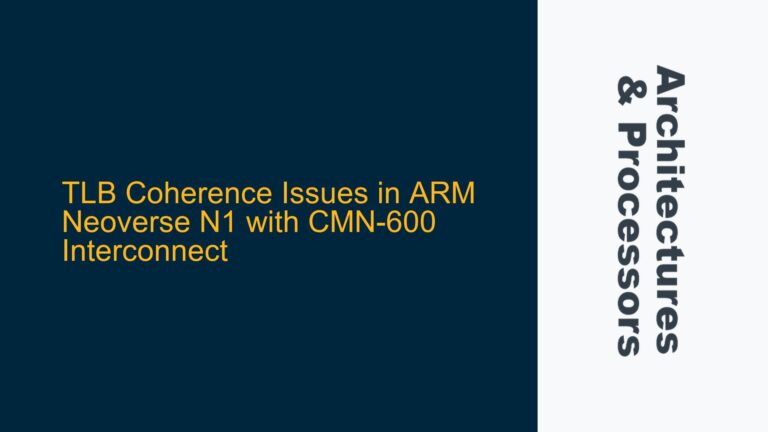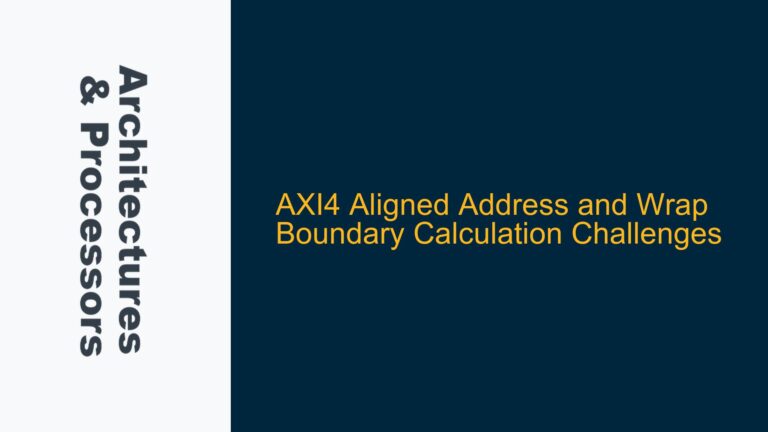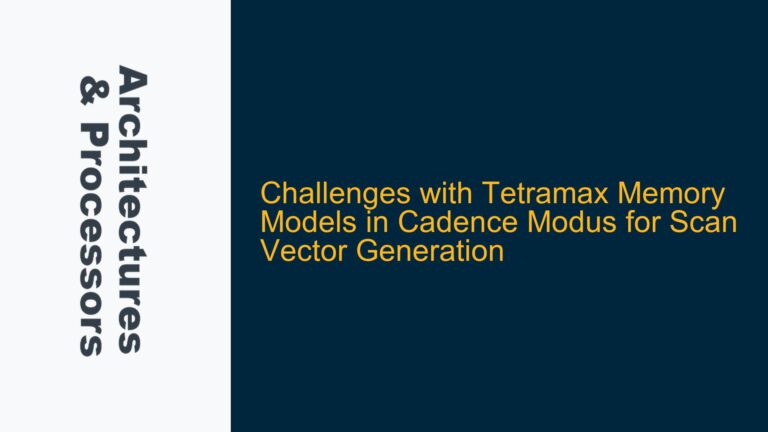Cortex-A53 Complex Array Allocation and HTL Instruction Fault
The issue at hand involves a failure during the allocation of a complex array on an ARM Cortex-A53 processor. The code, which previously functioned correctly on a Cortex-A9, now results in a Hardware Transactional Memory (HTL) instruction fault when executed on the Cortex-A53. The fault occurs at a specific memory address (0x4a028), indicating a potential issue with the memory allocation or the handling of complex data types in the new architecture. This problem is particularly perplexing because the codebase has not undergone significant changes, suggesting that the fault is tied to architectural differences between the Cortex-A9 and Cortex-A53.
The Cortex-A53 is a 64-bit ARMv8-A processor that introduces several architectural advancements over the Cortex-A9, including support for Hardware Transactional Memory (HTM). HTM is a feature designed to simplify concurrent programming by allowing sequences of instructions to execute atomically. However, HTM is not without its complexities, and its implementation can lead to subtle issues, especially when dealing with dynamic memory allocation and complex data types.
The specific error message, "HTL instruction failed," suggests that the processor encountered an issue while attempting to execute a transactional memory operation. This could be due to a variety of reasons, including but not limited to: improper memory alignment, cache coherency issues, or unsupported operations within a transactional block. Given that the fault occurs during the allocation of a complex array, it is likely that the issue is related to how the Cortex-A53 handles memory for complex data types, particularly when using the C++ Standard Library’s std::complex.
Memory Alignment and Cache Coherency in ARMv8-A
One of the primary differences between the Cortex-A9 and Cortex-A53 is the memory model and cache architecture. The Cortex-A53, being an ARMv8-A processor, has a more sophisticated memory system that includes support for Hardware Transactional Memory. This feature relies heavily on proper memory alignment and cache coherency to function correctly. If the memory allocated for the complex array is not properly aligned, or if there are cache coherency issues, the HTM operations may fail, leading to the observed HTL instruction fault.
Memory alignment is particularly important when dealing with complex data types. The std::complex type in C++ typically consists of two floating-point values (real and imaginary parts), which must be stored in contiguous memory locations. If the memory allocated for the array is not aligned to the required boundary (usually 8-byte or 16-byte alignment for double-precision floating-point numbers), the processor may encounter difficulties when attempting to perform atomic operations on the data.
Cache coherency is another critical factor. The Cortex-A53 employs a multi-level cache hierarchy, and ensuring that all cores have a consistent view of memory is essential for correct operation. If the cache lines containing the complex array data are not properly synchronized across cores, the HTM operations may fail. This is especially true in a multi-threaded environment where different threads may be accessing the same memory locations concurrently.
Debugging and Resolving HTL Instruction Faults
To resolve the HTL instruction fault, a systematic approach to debugging and problem-solving is required. The following steps outline a comprehensive strategy for identifying and fixing the issue:
Step 1: Verify Memory Alignment
The first step is to ensure that the memory allocated for the complex array is properly aligned. The std::complex type typically requires 8-byte or 16-byte alignment, depending on the precision of the floating-point numbers used. If the memory is not aligned correctly, the processor may encounter issues when attempting to perform atomic operations on the data.
To verify memory alignment, you can use the alignas specifier in C++11 or later to enforce the required alignment. For example:
alignas(16) comp* A = new comp[N];
This ensures that the memory allocated for the array A is aligned to a 16-byte boundary, which should be sufficient for most double-precision floating-point operations.
Step 2: Check Cache Coherency
The next step is to ensure that the cache lines containing the complex array data are properly synchronized across all cores. This can be achieved by using memory barriers or cache management instructions to enforce cache coherency.
In ARMv8-A, the DSB (Data Synchronization Barrier) and DMB (Data Memory Barrier) instructions can be used to ensure that all memory operations are completed before proceeding. Additionally, the DC CIVAC (Data Cache Clean and Invalidate by Virtual Address to Point of Coherency) instruction can be used to clean and invalidate specific cache lines, ensuring that all cores have a consistent view of memory.
Step 3: Disable HTM for Debugging
If the issue persists, it may be helpful to disable Hardware Transactional Memory temporarily to isolate the problem. This can be done by modifying the processor’s configuration registers to disable HTM support. Once HTM is disabled, you can re-run the code to see if the fault still occurs. If the fault is resolved, it indicates that the issue is indeed related to HTM.
Step 4: Analyze the HTM Implementation
If disabling HTM resolves the issue, the next step is to analyze the HTM implementation in your code. Ensure that all operations within the transactional blocks are supported by the Cortex-A53’s HTM implementation. Some operations, such as system calls or certain memory accesses, may not be supported within a transactional block and could lead to faults.
Step 5: Optimize Memory Access Patterns
Finally, optimizing memory access patterns can help reduce the likelihood of HTL instruction faults. This includes minimizing the number of memory accesses within transactional blocks, ensuring that memory accesses are aligned and contiguous, and avoiding unnecessary cache line invalidations.
By following these steps, you should be able to identify and resolve the HTL instruction fault on the Cortex-A53. The key is to carefully analyze the memory alignment, cache coherency, and HTM implementation to ensure that all aspects of the system are functioning correctly.
Conclusion
The HTL instruction fault on the Cortex-A53 during complex array allocation is a complex issue that requires a thorough understanding of the ARMv8-A architecture, particularly its memory model and cache coherency mechanisms. By systematically verifying memory alignment, ensuring cache coherency, and analyzing the HTM implementation, you can identify and resolve the underlying cause of the fault. This approach not only addresses the immediate issue but also provides a framework for debugging similar problems in the future.

